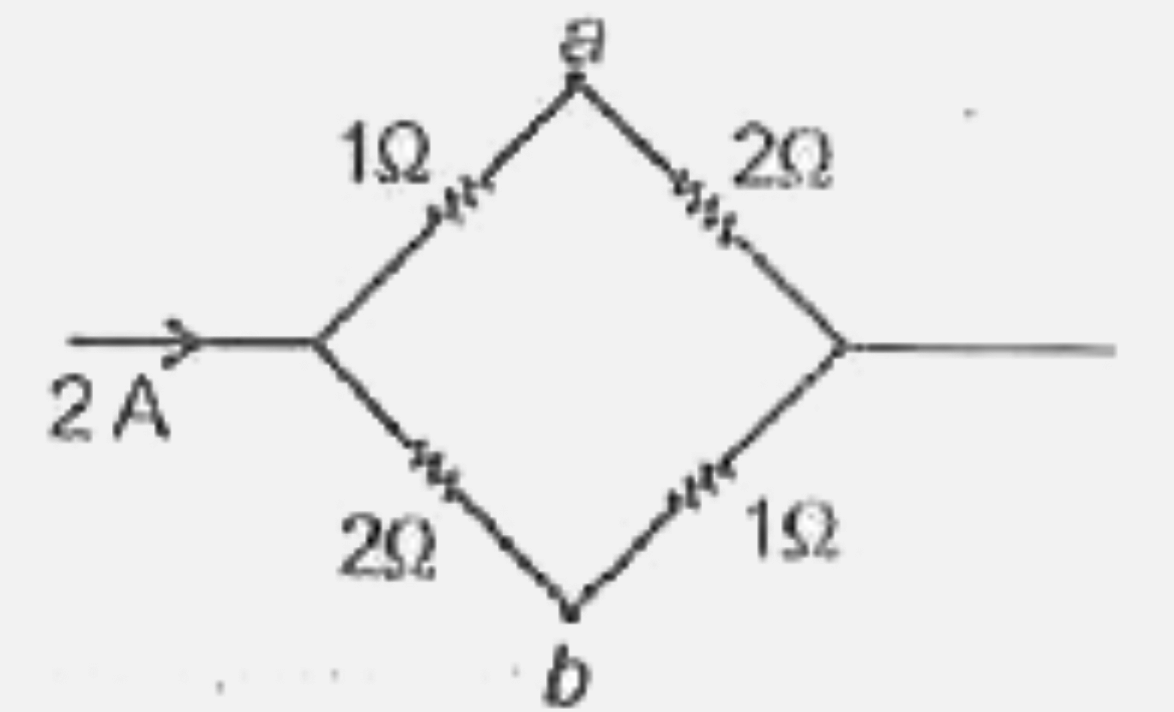Explain the statement 'the potential difference between two points is 1 volt'.
To explain the statement "the potential difference between two points is 1 volt," we can break it down into the following steps:
Step 1: Understanding Potential Difference
Potential difference (V) between two points A and B in an electric circuit is defined as the work done (W) to move a unit charge (Q) from point A to point B.
Step 2: Defining 1 Volt
The unit of potential difference is the volt (V). By definition, 1 volt is the potential difference when 1 joule of work is done to move 1 coulomb of charge from one point to another.
Step 3: Mathematical Representation
We can express this relationship mathematically as:
V=WQ
Where:
- V is the potential difference in volts,
- W is the work done in joules,
- Q is the charge in coulombs.
Step 4: Applying the Definition
If the potential difference between points A and B is 1 volt, it means that:
VAB=1 volt
This implies that:
1 volt=1 joule1 coulomb
Thus, when 1 joule of work is done to move a charge of 1 coulomb from point A to point B, the potential difference is defined as 1 volt.
Conclusion
Therefore, the statement "the potential difference between two points is 1 volt" means that it takes 1 joule of work to move a charge of 1 coulomb between those two points.
---
Potential difference (V) between two points A and B in an electric circuit is defined as the work done (W) to move a unit charge (Q) from point A to point B.
The unit of potential difference is the volt (V). By definition, 1 volt is the potential difference when 1 joule of work is done to move 1 coulomb of charge from one point to another.
We can express this relationship mathematically as:
V=WQ
Where:
- V is the potential difference in volts,
- W is the work done in joules,
- Q is the charge in coulombs.
If the potential difference between points A and B is 1 volt, it means that:
VAB=1 volt
This implies that:
1 volt=1 joule1 coulomb
Thus, when 1 joule of work is done to move a charge of 1 coulomb from point A to point B, the potential difference is defined as 1 volt.
Therefore, the statement "the potential difference between two points is 1 volt" means that it takes 1 joule of work to move a charge of 1 coulomb between those two points.
Topper's Solved these Questions
- CURRENT ELECTRICITYBOOK - ICSECHAPTER - CURRENT ELECTRICITYEXERCISE - EXERCISE-8(A) ( MULTIPLE CHOICE TYPE)
2 Videos
- CURRENT ELECTRICITYBOOK - ICSECHAPTER - CURRENT ELECTRICITYEXERCISE - EXERCISE-8(A)(NUMERICALS )
16 Videos
- CURRENT ELECTRICITYBOOK - ICSECHAPTER - CURRENT ELECTRICITYEXERCISE - EXERCISE-8(C) NUMERICALS
35 Videos
- CALORIMETRYBOOK - ICSECHAPTER - CALORIMETRYEXERCISE - EXERCISE-11(B) (NUMERICALS)
15 Videos
- ELECTRO-MAGNETISM BOOK - ICSECHAPTER - ELECTRO-MAGNETISM EXERCISE - EXERCISE-10 (C) NUMERICALS
1 Videos
Similar Questions
The potential difference between points A and B is

View SolutionThe potential difference between points A and B is

View SolutionThe potential difference between points A and B is

View SolutionFind theh potential difference between points a and b.

View SolutionZeta potential is the potential difference between
View SolutionWhat is meant by saying that the potential difference between two points is 1V ?
View SolutionHow is voltmeter connected in the circuit to measure potential difference between two points ?
View SolutionThe potential difference between the point A and B in figure will be

View SolutionThe potential difference between the points A and B in the given circuit is

View SolutionIn example above, find the potential difference between points F and C.
View Solution
